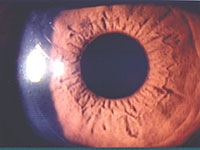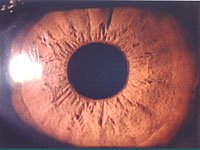Excimer laser corneal procedures dominant in Asia-Pacific regions
Patient profile and technological advances make cornea-based laser ablation procedures the popular choice in refractive surgery.
![Dennis S.C. Lam, FRCS, FRCOphth [photo]](/~/media/images/shared-images/lam_70_90_25563.jpg) Dennis S.C. Lam |
Current paradigms of refractive surgery include corneal shape alterations, such as corneal refractive surgery with excimer laser; placement of an anterior chamber angle-supported, iris-supported or posterior chamber phakic IOL; or clear lens extraction with replacement by a multifocal or accommodating IOL. China and Hong Kong have population characteristics that make refractive surgery in this region an interesting conundrum. A very high prevalence of myopia in these parts, with recent reports of increasing prevalence, suggests an important role for refractive surgery.
The smaller ocular dimensions in the anterior segment and a higher prevalence of narrow-angle glaucoma make phakic IOL implantation a more risky proposition, even in the myopic subgroups. Similarly, the present state of evolution of accommodating IOLs and the well-recognized limitations of the present generation multifocal IOLs makes the loss of accommodation following clear lens exchange less attractive in a largely young population presenting for refractive surgery. Not surprisingly, neither of these options have found favor in the region, and excimer laser corneal ablation remains the procedure of choice.
LASIK in Asian eyes is complicated by the smaller dimensions of eyes and tight palpebral fissures, which can make exposure of the ocular surface more difficult. However, recent customization of micro-keratomes with smaller rings, higher gearless tracks, and better design of speculums, has helped overcome these limitations to a large degree.
The recent introduction of intrastromal corneal lasers to create LASIK flaps has provided a good alternative that may enhance the safety profile of the procedure in the region. The eyelid and orbit structure, tear film parameters, blink dynamics and the higher attempted refractive correction also result in a higher risk of chronic dry eye and epithelial disturbances after LASIK in Asian eyes.
LASEK indications
Despite these important advances, some problems remain. In a population with a significant proportion of high myopes, from 8 D to 12 D, we have observed an increased co-occurrence of thinner corneas and large pupil sizes (even in ambient illumination). Conventional LASIK, even with thinner flaps, violates the precepts of corneal structural integrity in these eyes and is best avoided. We have hence followed with interest the advent and development of advanced surface ablation procedures such as laser epithelial keratomileusis (LASEK). In our experience, this procedure provides good results in low and moderate myopia of up to 6 D, but corneal scarring in higher myopes can result in compromised visual function.
We have used mitomycin-C (MMC) as an intraoperative adjunct to modulate corneal healing and scarring in pterygium and glaucoma surgery for more than a decade now and have been impressed with the safety and efficacy profile over long-term follow-up. We therefore used 0.02% MMC intraoperatively for 1 to 2 minutes in LASEK for high myopia (>8 D) with excellent results (Figures, below), and no significant complications over 3 years follow-up. We are now investigating the safety and efficacy profiles of lower concentrations of MMC used for shorter durations. Considering, however, the potential complications, including reduced stromal keratocyte counts with the use of MMC, it is imperative to continue to monitor these eyes. The use of confocal microscopy will allow in vivo assessment of the number and health of keratocytes in such corneas and would provide an important tool to better understand the long-term effects of this approach.
|
|
Images: Lam, D |
Conclusion
In conclusion, given the refractive error profile in the region, corneal refractive surgery is likely to play an important role in the treatment of myopia in the coming years. Modifications in the surgical instrumentation, the use of LASEK and intra-operative adjuncts such as MMC can help enhance the safety and efficacy profile in higher myopes. With further improvements in IOL technology for restoring accommodation and placement in phakic eyes, an increase in the use of non-corneal refractive strategies may be seen in this region.
For Your Information:
- Prof. Dennis S.C. Lam, MD, FRCS, FRCOphth, and Srinivas K. Rao, DO, DNB, FRCSEd, can be reached at the Department of Ophthalmology & Visual Sciences, The Chinese University of Hong Kong, Hong Kong Eye Hospital, Kowloon, Hong Kong, People’s Republic of China; e-mail: dennislam8@cuhk.edu.hk, skrao@cuhk.edu.hk.
References:
- Fan DS, Lam DS, Lam RF, Lau JT, Chong KS, Cheung EY, Lai RY, Chew SJ. Prevalence, incidence, and progression of myopia of school children in Hong Kong. Invest Ophthalmol Vis Sci. 2004;45(4):1071-5.
- Foster PJ, Johnson GJ. Glaucoma in China: how big is the problem? Br J Ophthalmol. 2001;85(11):1277-82.
- Asano-Kato N, Toda I, Hori-Komai Y, Takano Y, Tsubota K. Risk factors for insufficient fixation of microkeratome during laser in situ keratomileusis. J Refract Surg. 2002;18(1):47-50.
- Albietz JM, Lenton LM, McLennan SG. Dry eye after LASIK: comparison of outcomes for Asian and Caucasian eyes. Clin Exp Optom. 2005;88(2):89-96.
- Kim TI, Pak JH, Lee SY, Tchah H. Mitomycin C-induced reduction of keratocytes and fibroblasts after photorefractive keratectomy. Invest Ophthalmol Vis Sci. 2004;45(9):2978-84.


